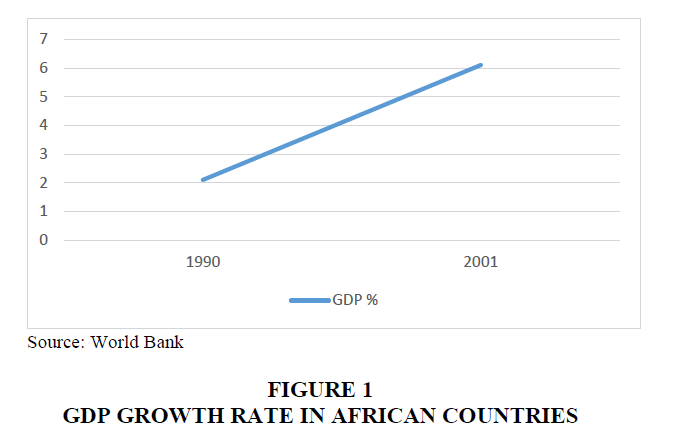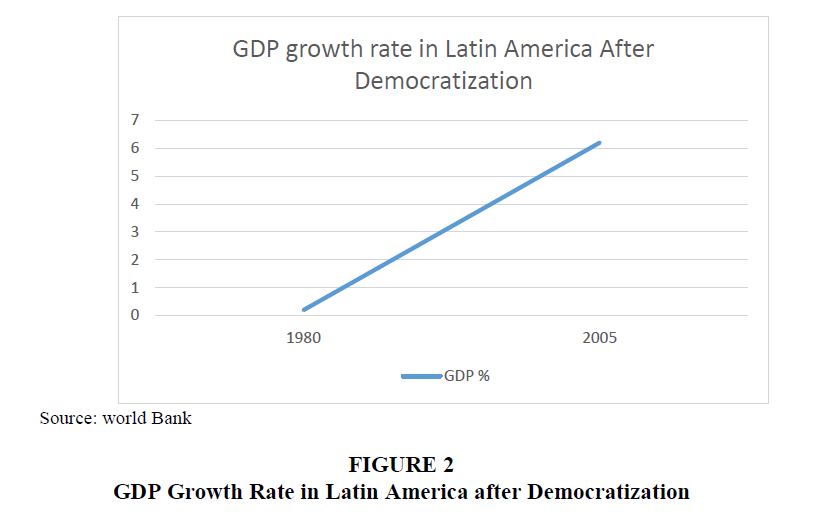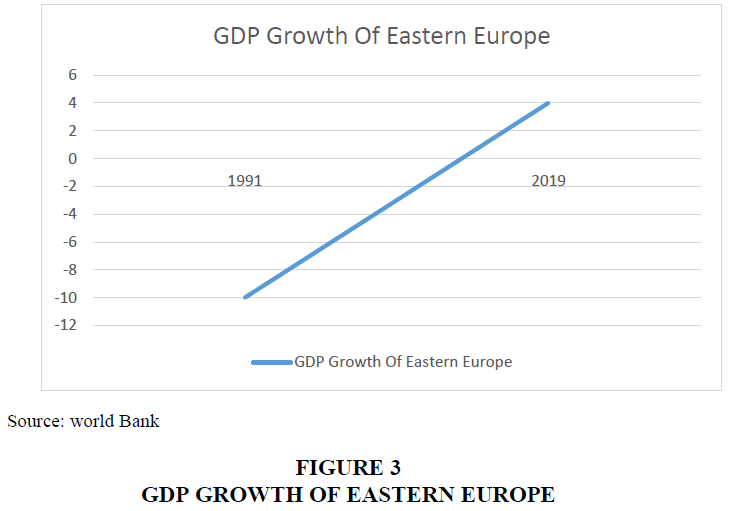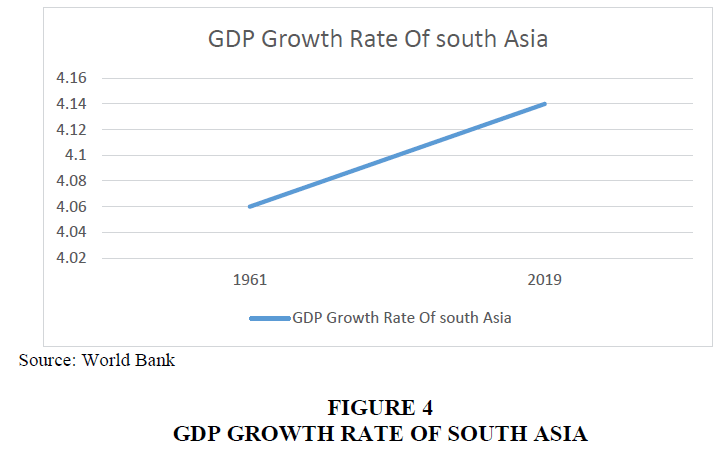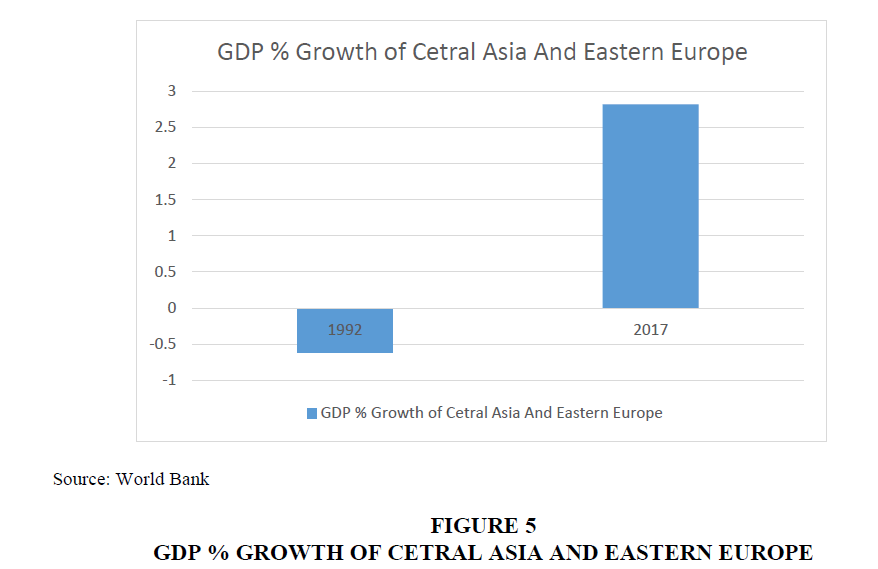Research Article: 2023 Vol: 26 Issue: 4
Regulative Capacity Leads towards Political Development: A Study of Developing Countries.
Muhammad Nawaz, MPhil scholar at Government College University Lahore
Citation Information: Nawaz, M. (2023). Regulative capacity leads towards political development: a study of developing countries. Journal of Legal, Ethical and Regulatory Issues, 26(4), 1-11
Abstract
Regulative capacity is the pivot of modern political systems. It is inherent in the sovereignty of state of system. Sovereignty it the main pillar of the modern state system. Sovereignty is exhibited through the regulative capacity by any state. Regulative capacity is inter related with the political development of countries. Developing countries embarked upon the path of political development by enhancing their regulative capacity. Although states adopted their own method to develop such capacity either through democracy or authoritarianism yet one aspect was common that every country admitted the importance of political development to achieve political development.
Keywords
Political Development, Developing Countries, Regulative Capacity.
Introduction
State capacity is considered very essential for political development. It is the essential ability of any state to deal with the emerging problems of equality and distribution. Regulative capacity deals with inherent power of the state to make legislation and implement those laws to regularize society. Rules and regulations not only limited to the matters of distribution but they also cover the whole the domain of public behavior. State capacity also refers to the implementation of the decisions both on domestic and foreign fronts (Dodd, 1973).
Regulative capacity also includes financial autonomy, judicial review and feedback from masses for legislative consultations as an essential element for the regulative capacity of any state (Minogue & Carino, 2008).
Political system generates different demands by masses during its working. Demands are a source of stress for every political system and this stress is released only by the inherent regulative capacity of the system to satisfy these demands. Hence this capacity leads to the political development. Role of regulative capacity can be witnessed in developing countries (Ahmad & Eijaz, 2011).
The purpose of this research paper is to explore the relationship between political the regulative capacity and the political development. This paper focuses on the enhancement of regulative capacity vis a vis political development. Since the developing countries are large in numbers hence they are studies under different categories. These classifications are determined on regional basis for analysis. For this purpose, developing countries from each continent are analyzed independently and cumulative results are drawn in the end.
Phenomenon of development and its relationship with regulative capacity is determined through indexation and by the use of correlation line.
Researcher has opted a specific quantitative scheme for the determination of both the qualities of regulative capacity and political development in order to apply correlational analysis. Qualitative and quantitative techniques are applied in this research. Data is gathered from different credible sources and correlation test is performed to determine the relationship between both variables.
Gross Domestic Product (GDP) has been taken by researcher as the measurement of political development as GDP denotes the economic development. Economic development is considered as an essential indicator of political development and it also understood to brought many changes in the society (Ahmad & Eijaz, 2011). Since economic development is linked with rules regulation of the state hence researcher is of the view that it can facilitate in the ascertaining the relationship between the selected variables.
Theoretical Framework
Capacity of any system is among the three development syndrome of political system. It deals with the incapacitation of political system to deal with the emerging challenges and demands. Regulative capacity becomes more important in this regard as it shows the inherent ability of political system to tackle the problems of distribution and equality (Pye, 1965). Moreover regulative capacity manifests the sovereign characteristic of any state which is an important indicator of political development. It releases stress on the system by meeting out the demands of masses (Ahmad & Eijaz 2011).
Regulatory capacity also regulates the behavior of masses according to the requirement of the state. With the process of industrialization and modernization, many trends emerge among masses hence regulative capacity becomes more significant in order to channelize the behavior of general public according to law. Regulative capacity can be measured by the performance of system and its achievement. This development can be traced through tax collection, crime control, law and order, health and educational facilities (Dinello & Popov 2007).
Literature Review
Dodd (1973) this deals with concept of the regulative capacity and its delivery and distributary aspects. Researcher has emphasized in this article the demand stress and delivery of the political system and role regulations to that effect.
Minogue & Carino (2008) this book gives us the complete detail about the regulatory governments in developing countries. Authors have laid stress that regulative capacity is not only confined to the rules and regulation and satisfying the demands but it is also manifested in foreign policy and is the indicative of the sovereignty of the state.
Ahmad & Eijaz (2011) this article is the study of the development of the regulative capacity of Pakistan. this article brings into light the demand stress and delivery mechanism in Pakistan. This article also highlights political development of Pakistan and solution of distributional problems by NFC award.
Dinello & Popov (2007) this book deals with the study of the establishment of political institutions in different parts of the world and their failure. This research work also explores the possibilities for the rejuvenation of the institutional development.
Pye (1965) this article is related to the basic concept of the political development this article manifests different indicators and syndromes of development.
Lancaster & Van de Walle (2018) this book deals with the phenomenon of development in various parts of the world especially African region are mentioned and researched in this book in detail. This book also provides important figures of development.
Morrissey & Stewart (1995) this book also brings in to light the development efforts taken in developing countries. This research work also gives us the democratic trends in Africa and their impacts on political development.
Sheahan (2022) this book provides us the deep insight in to the political culture of Latin America. This book also brings in light the political decay in Latin America and reasons for the political decay in Latin America.
Berglund (2013) this book gives us insight in to the political transformation of the Eastern Europe after the fall of USSR. This piece of research is also helpful in understanding the transformation of the eastern European states towards democratic and pluralist states.
Ullah et al. (2014) this article gives us insight in to the development strategies of Asian societies. This article also reveals that Asian societies are traditional and patriarchal. They drive their capacity from these routes.
Research Objectives
Purpose of this paper is to explore the relationship between regulative capacity and political development. It is very significant to explore that how far regulative capacity has contributed to the political development of the developing countries. This paper also manifests the other factors which have creates enormous hurdles in the development of the developing countries. This research paper also explores the general social conditions prevailing in the developing countries and improvement in social conditions. This exploratory research will also incite future research in this field of study.
Hypothesis and Research Questions
Regulative capacity unleashes development in various social sectors and developing countries have also witnessed the phenomenon of political development with the enhancement of their regulative capacity.
1. Whether regulative capacity has contributed to the overall political development of developing countries?
2. Has regulative capacity brought sovereignty among developing countries?
3. Are there any social changes regarding to law and order, increase in tax collection, deliver of the system by meeting the demands of masses and general improvement in the health and educational sectors.
4. Has regulative capacity solved the problems of distribution in the developing countries?
Significance of the Study
This research is very beneficial for the society as it deals with relationship of regulative capacity and political development. This research highlights the relationship between both variables of regulative capacity and political development. As it is the case study of developing countries hence it becomes very significant for the developing countries to embark on the shores of political development.
This study also gives us insight about aspect of sovereignty of regulations. Solution of distributional problems faced by many developing countries is the core of this research. This research also manifests how different societies solved their problems of differentiation and how they were able for the equitable distribution of resources. This research also highlights the development of different political structures by different countries for delivery of political system. Hence this study becomes significant for the policy makers to establish such institute to incapacitate their systems for the enhancement of the regulative capacity of their countries in order to reach to the epitome of the developed nations.
Research Methodology
Both qualitative and quantitative methods were applied for to explore the relationship between the variables. Regulative capacity was explored by using the GDP specific approach. As GDP manifests many indicators of political development. Credible sources of information were analyzed for the accumulation data. For this secondary data was employed. Deductive and inductive methodologies were employed to establish the relationship. As the area of study was vast hence deductive and inductive techniques were applied for the application of the result.
Data was used numerically and compared through base years and years of democratic process for every region. Graphical illustrations were applied to illustrate analysis summarily.
Situational Analysis
This analysis covers developing countries from different regions on the basis of predetermined characteristics. As this article runs short of space to cover whole of the countries hence few of the countries have selected for the analysis.
Situational Analysis of African Countries
African countries apart from South are usually categorized in to third world countries. These countries are based on agricultural economies with small holdings and are based on rain fed agriculture. Long period colonization has been very detrimental to their sovereign legislative capacity and have rendered them unable to have the syndrome of regulative capacity (Lancaster & Van de Walle 2018).
Colonial powers invested in Africa to extract large profits. Governments or state authorities acted to safeguard the interest of colonial powers. After independence majority of the countries started as democracies bus soon their governments became autocratic by developing single party dominance and later on authoritarian military regimes (Lancaster & Van de Walle 2018).
Majority of the African countries fell prey to authoritarian rule of one party or military dictators with the exceptions of Botswana, Mauritius and Gambia. These countries however successful in keeping multiparty political system (Morrissey & Stewart 1995).
Rise of oil prices in 1970s proved detrimental to the economic development of the African countries while oil producing countries reaped great profits. Contraction of the economy rendered these countries more susceptible to social turmoil. Lack of institutional development and regulative capacity rendered these countries vulnerable to social uprisings (Lancaster & Van de Walle 2018).
Most of these countries were rules by personalized rules or by authoritarian regimes. As these regimes have strong control of resources and these resources were always allocated to those who had ties with the ruling party or ruling heads of the state this created resentment among masses. This general sense deprivation and resentment lead to civil uprisings and transition towards democracy became inevitable (Morrissey & Stewart 1995).
During the era of 1990s the ever growing discontentment among masses rose to the stage of general protests. Masses became dissatisfied of the policies of the rulers. Students and other trade unions started protesting against the regimes. These included dissidents, unemployed and even politicians who demanded removal of dishonest leaders from helm of the affairs (Morrissey & Stewart 1995).
These uprisings brought sudden changes in African countries. Sudan and Malawi suppressed the agitations while Somalia and Liberia descended into a political turmoil and ultimately civil war. Before 90s 38 states out 45 states were governed by authoritarian regimes and after general uprisings half the numbers of authoritarian states pledged for the democratic transitions (Morrissey & Stewart 1995).
New trends of growth in Africa needs establishment of institutions and peaceful democratic transitions like Mauritius and South Africa possess shows in figure 1. These institutional developments combined with democratic transitions will enhance the regulative capacity of the Africa states and growth model will more likely to continue in future as well (Lancaster & Van de Walle 2018). Problem related to distribution which are being faced by Kenya, Zimbabwe and Nigeria can also be solved by applying South African Model (Lancaster & Van de Walle 2018).
This increase in growth also manifests that developing countries needed to provide environment of security and strong regulative capacity to unleash economic development in their countries which may further help them on the path to political development (Smith, 1996).
Situational Analysis of Latin American Countries
Study of Latin American countries is full mix of both confusion and conflict. Source of this confusion is the period of transition from agrarian to industrialized society, from land owner to urbanization and from primary stable exports product to unstable vale added product markets. Few of the Latin American countries also witnessed strong growth in patches but mostly society in Latin America remained mired with class struggles and divisions (Sheahan, 2022).
Failure of Latin American economies can also be attributed to the lack of institutional development and lack of social equity sluggishness of economic growth made situation worst (Payne et al., 2002).
Political repression and economic meltdown proved fatal for the Latin American countries. There is general belief that capitalism is the responsible for the problems of the Latin American countries. Yet there is also opinion that if democratic transitions occur in Latin American countries, these countries can also embark upon the road d of the political development. Moreover, regulative capacity of the respective countries can also be enhanced by the establishment of parliamentary democracy (Sheahan, 2022).
Latin American countries adopted democratic system in 1970s and 1980s Shows in figure 2. Most of these countries faced problems in having presidential or parliamentary forms of government. Presidents had long terms with enormous legislative powers. These powers made system autocratic in outlook and hampered the process of the enhancement of the regulative capacity of the states (Payne et al., 2002). Anyhow process of democratization and enhancement in regulative capacity brought results in the 1990s where Latin showed good economic growth and also improved social indicators (Smith, 1996).
Situational Analysis of Eastern European Countries
Eastern Europe fell to communism after 2nd world war. These countries had stagnated economic growth under communist regimes. Repressive tactics were used by communists against this opponent during communism. This authoritarian rule together with strict guidance and surveillance from Moscow deprived these countries of necessary element of the regulative capacity. Hence these states were politically termed as on their lowest ebb of the history (Stibbe & McDermott, 2015).
Eastern Europeans enjoyed low life standard as compared to the Western European people. This stark difference led to certain rights movements in the Eastern European states. these movements were brutally suppressed by communist regimes. But during 1980s these movements gathered momentum and popular uprisings paved the way for the elimination of communism from Eastern Europe (Stibbe & McDermott, 2015).
After the revolution of 1989 and dissolution of USSR in 1991, eastern European states saw a transition from communist states to pluralistic states shows in figure 3. Eastern Europe together with Baltic States embarked upon the road to democracy and the enhancement of the regulative capacity of their respective states (Berglund, 2013).
Almost all of the Eastern European states were able to establish democratic traditions while central Asian states of erstwhile USSR again turned hybrid democratic and autocratic regimes (Berglund, 2013).
The transition towards democracy was also necessitated by the desire of the masses of these states to be included in the European Union. EU constitution always encouraged democratic traditions and laid great stress upon the human rights.EU ensured the accession of these states only in case of the guarantee of human rights and democratic form of government provided by these states (Sadurski et al., 2006).
Democratic transitions in Eastern Europe improved regulations and unleashed economic growth. Eastern European countries were showing weak economic growth in the late 80s which resulted in the collapse of communism. Although still these economies are behind of The Western European states in terms of political development yet it is clearly manifested that these developing countries have embarked upon the discourse of political development (Ganev, 2015).
Situational Analysis of the Asian Countries
Asia is a huge in order to have better analysis it is divided among different regions. South Asia is composed of 8 countries. 7 out of which have colonial past and apart from India all of them have fragile democratic setup. South Asia witnessed economic growth in patches. State institutions remained weak in other countries but the onset of 20th has given more impetus to democracy and democratic transitions (Ullah et al., 2021).
Although Asia depicts a steady growth on the chart yet stability of Indian economy and economy of Bangla Desh recently shows promising growth as compared to other countries of the region strongly shows the strength of regulative capacity (Figure 4).
Solution of distribution crisis in Pakistan through 7th NFC award and much demanded provincial autonomy through 18th amendment in the constitution of Pakistan has strengthened the federation and have contributed a lot to the solidarity of the country as well this clearly depicts political development through regulative capacity (Ahmad & Eijaz, 2011).
Political system of china is based on authoritarian rule. China is the most populated country in the world. In order to save herself from collapse, China had to resort to authoritarian rule. Authoritarian rule has provided China with a strong inherent regulative capacity. And this decision making and delivery capacity has miraculously delivered in china (Guo, 2007).
The development of East Asian economies in the latter half of the 19th century is attributed to the Asian values. Asian values which apparently democratic but inherently authoritarian and patriarchal. Economies on Indonesia. Malaysia and Thailand grew rapidly. Japan became a developed nation. These countries had strong regulative capacities and continuation of the system (Yang & Lim, 2000).
Central Asian economies can be compared to the Eastern European economies. Both of these regions remained under communism and central had been the part of USSR. These countries gained independence after the dissolution of Soviet Union. Central Asian states started as democratic states but soon they fell to hybrid democratic and autocratic rule (Berglund, 2013).
Central Asian countries remained isolated from rest of the world for almost 70 years figure 5. These countries were the part of great Soviet economic machine now these countries are independent and have great reserves of natural resources. These virgin economies have great potential to develop. Their natural reserves have drawn the intention of the developed world (Raimondi, 2019).
Due to proximity with Europe Central Asian regional data is calculated with European countries of Eastern Europe.
West Asia in composed of the Gulf Countries and the Middle Eastern countries. These countries are blessed with the large reserves of crude oil. But this region is mired by the politics and interest of the great powers. This region apart from Turkey and Israel has been ruled by authoritarian regimes. Arab uprisings and wars in Iraq have damaged this region to a great extent and regulative capacity of the state is only vested in the rulers of the autocratic states (Tripathi, 2015).
Although oil wealth has contributed a lot to the apparent economic prosperity yet this region is lagging behind in terms of political development. Lack institutional development has made this region vulnerable to continuous uprisings and civil war (Tripathi, 2015).
Findings of the Study
Regulative capacity has played a great role in the development of different states. Developing countries of different regions have experienced strong economic growth during periods of stability. Attribute of stability arises out of regulative capacity. Regulative capacity of the state has been able to solve the distribution problems in the countries like Pakistan.
Different countries have enhanced their regulative capacity in different ways. Some have opted for democratic system and some countries adopted authoritarian system to deliver. It is the delivery and satisfaction of the demands which matter in the last. Countries of developing countries which experienced unprecedented growth in GDP had one aspect in common that was the continuity of rules and regulations. Capable institutional setup to implement those rules. Satisfaction of demands as earlier as possible.
A positive correlation between political development and the regulative capacity is explored in this research paper.
Recommendations
1. Developing countries should establish durable political institutions.
2. Smooth transition of power or functional democratic practices should be established.
3. Developing countries should practice continuity of the reforms.
4. Developing countries should keep the examples of South Korea and Japan in order to develop their regulative capacity.
5. Developing countries will have to tread on the path of development strictly.
6. Policies should be made to solve distributional crisis in the developing world for the stability of their countries.
Conclusion
Regulative capacity has direct relationship with political development. All those countries who have experienced development had the common characteristic of the regulative capacity. Even among the developing countries that were able to develop the regulative capacity. Countries also tried to enhance regulative capacity by different means. Some of them resorted to democracy and some opted for authoritarianism. Aim of both groups was the enhancement of the rules and regulations to achieve political development. Regulative capacity regardless of the type of system led towards political development hence hypothesis is proved.
References
Ahmad, R.E., & Eijaz, A. (2011). Demands, capabilities, decisions and outcome. International Journal of Business and Social Science, 2(15).
Berglund, S. (2013). The handbook of political change in Eastern Europe. Edward Elgar Publishing.
Dinello, N.E., & Popov, V. (2007). Political institutions and development: Failed expectations and renewed hopes. Edward Elgar Publishing.
Dodd, C.H. (1973). Political development: The end of an era?. Government and Opposition, 8(3), 367-374.
Ganev, V.I. (2015). The 1989 revolutions in central and eastern europe: from communism to pluralism. Ed. Kevin mcdermott and matthew stibbe. Manchester: manchester university press, 2013. Xx, 296 pp. Notes. Chronology. Index. $115.00, hard bound. Slavic Review, 74(3), 646-647.
Indexed at, Google Scholar, Cross Ref
Guo, D. (2007). Chinese model of political development: Comparative perspective. The journal of east asian affairs, 117-138.
Lancaster, C, & Van de Walle, N. (2018). The Oxford handbook of the politics of development. Oxford University Press.
Indexed at, Google Scholar, Cross Ref
Minogue, M, & Carino, L. (2008). Regulatory governance in developing countries. Edward Elgar Publishing.
Morrissey, O, & Stewart, F. (1995). Economic and political reform in developing countries. New York: St. Martin's Press.
Indexed at, Google Scholar, Cross Ref
Payne, J.M., Zovatto, D., & Flórez, F.C. (2002). Democracies in development: politics and reform in Latin America 1. Idb.
Received: 13-Apr-2023, Manuscript No. JLERI-23-13474; Editor assigned: 15-Apr-2023, Pre QC No. JLERI-23-13474(PQ); Reviewed: 01-May-2023, QC No. JLERI-23-13474; Revised: 08-May-2023, Manuscript No. JLERI-23-13474(R); Published: 15-May-2023
